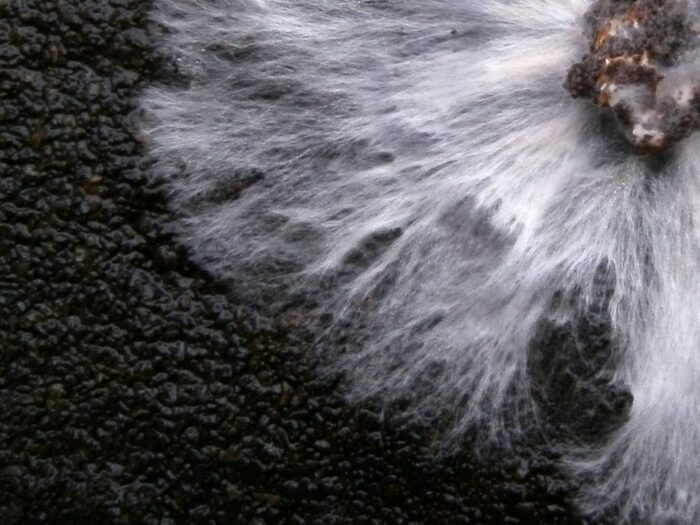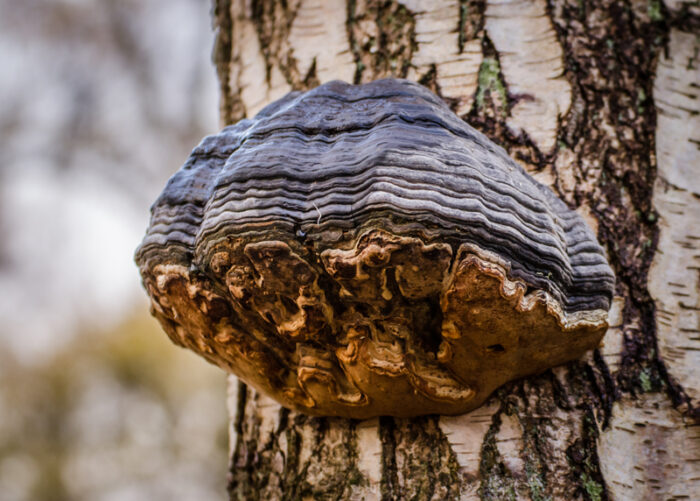Plastic waste is a big problem. We're surrounded by it and recycling programs are overwhelmed by the demand. Despite programs in cities around the world, most plastic still goes into landfill (garbage dumps).
The need for compostable, naturally biodegradable alternatives to plastic has led us to some interesting ideas. One of the newest ones looks at that friendly forest fungus, the mushroom.
Mushrooms, especially the root-like threads within them called mycelium, have been talked about for a while as a hot new building material. There's even been a proposal to have them used to build structures on Mars!
Now new research is saying that it could be used as a green, biodegradable alternative to plastic. In particular, the mycelium found in the curious tinder fungus.
Tree hooves

This mushroom goes from parasite to decomposer after a tree dies, helping to regenerate the forest. (Wikimedia Commons)
Tinder fungus (Fomes fomentarius) is a grey, brown, or black mushroom that grows on tree trunks. It looks a lot like a horse's hoof, which is what gives it its other name, hoof fungus. In fact, it goes by several names, even ice man fungus because a 5,000-year-old Ice Age mummy was found with four of these mushrooms in his possession!
He probably had them because of the fact that tinder fungus is indeed very useful as tinder—something that can start a fire. (And a fire was a good thing to know how to build in the Ice Age.)
But the researchers in this study weren't drawn to this mushroom because of its use as kindling or its similarity to horse hooves. Nor were they thinking about how this mushroom has been traditionally used as medicine or as a material for clothing.
They were excited by the especially strong structure of its mycelium.
Tough, but light

Mycelium looks incredibly delicate, but it can produce some very strong structures. (Wikimedia Commons)
According to the study, tinder fungus has three different layers—a hard outer crust, a foam-like 'flesh' layer, and hollow tubular structures at the core. Mycelium is a part of all of these structures, and they are all remarkably strong in their own ways. The study stated that parts of the mushroom were as strong as pine and leather, but far lighter than these things. The hollow inner tubes were particularly strong.
These traits makes the mushroom an ideal material to use as a plastic replacement. One of the biggest positives of plastic has always been that it is strong but light. This makes plastic cheaper to transport than materials like wood or metal, not mention easier to carry around.
Could we all be carrying boxes and packages made of mushroom mycelium in the future?
The research into this is really only just beginning. But with the demand for planet-friendly packaging at an all-time high, it feels like the perfect time to dive deeper into the powers of mycelium.
 Tinder fungus grows on trees as a parasite, meaning it steals nutrients from its host plant. (ID 37711906 © Marcyano79 | Dreamstime.com)
Tinder fungus grows on trees as a parasite, meaning it steals nutrients from its host plant. (ID 37711906 © Marcyano79 | Dreamstime.com)









